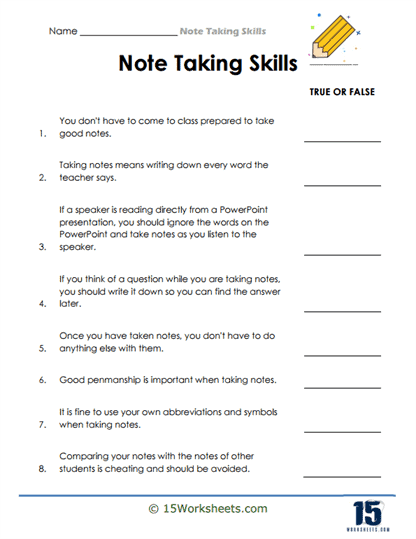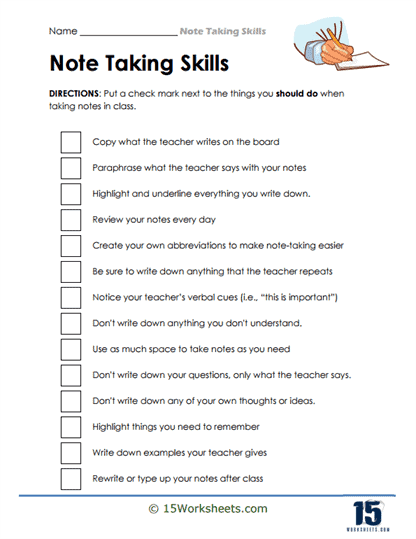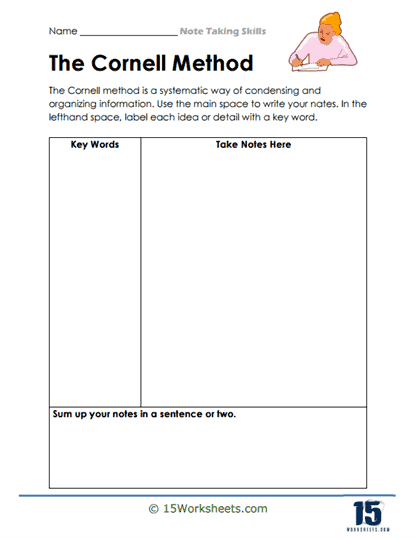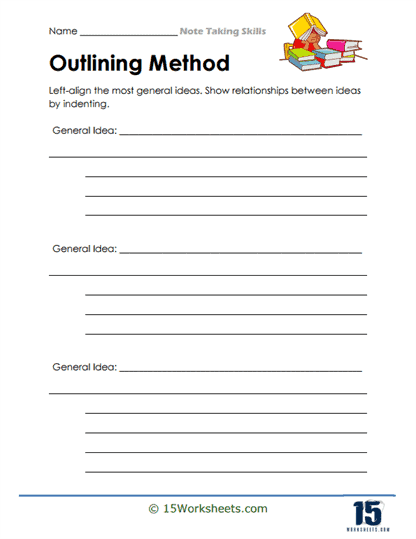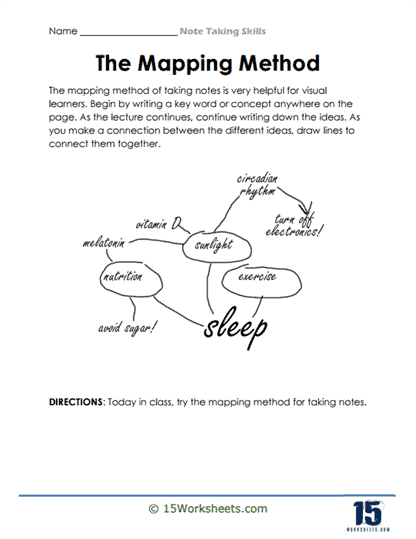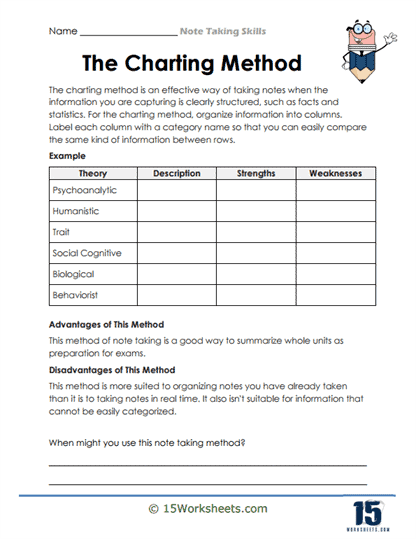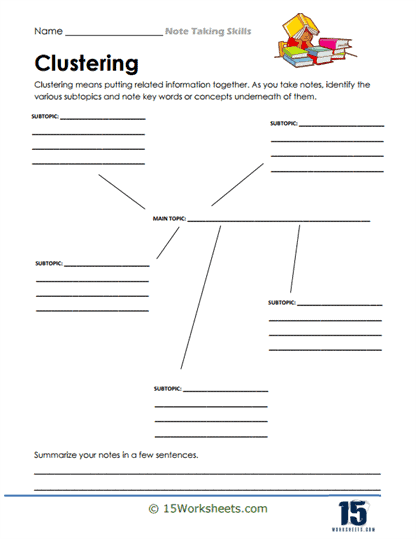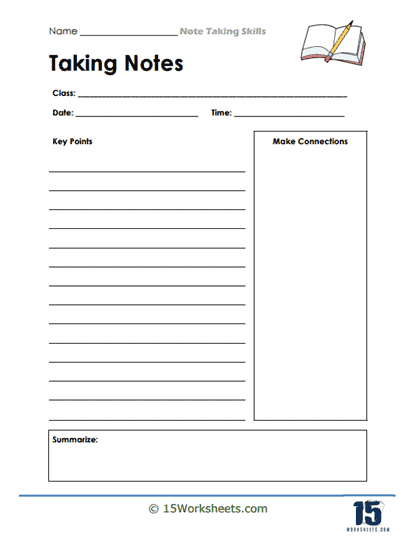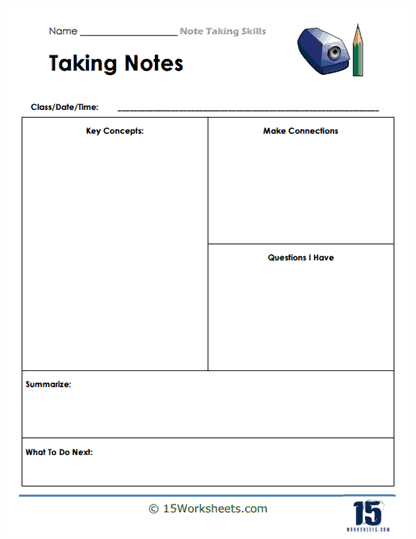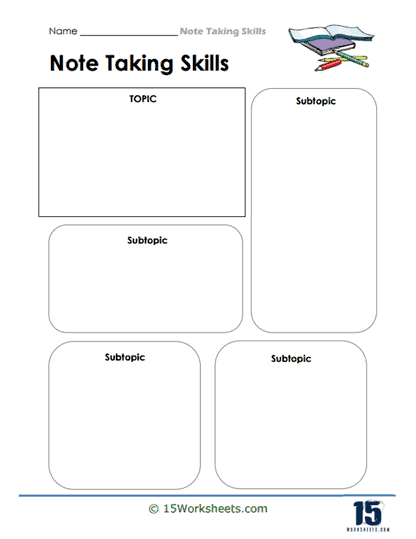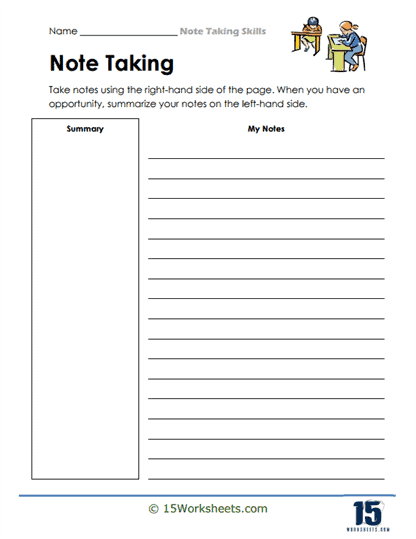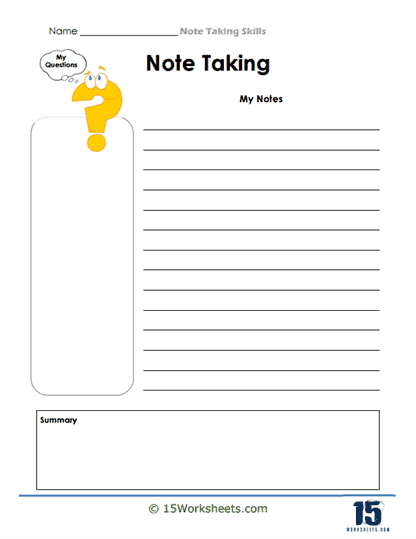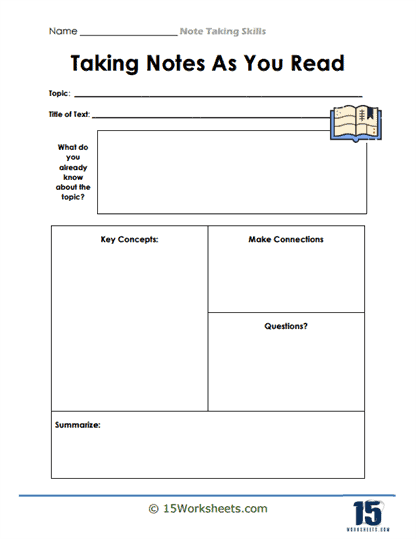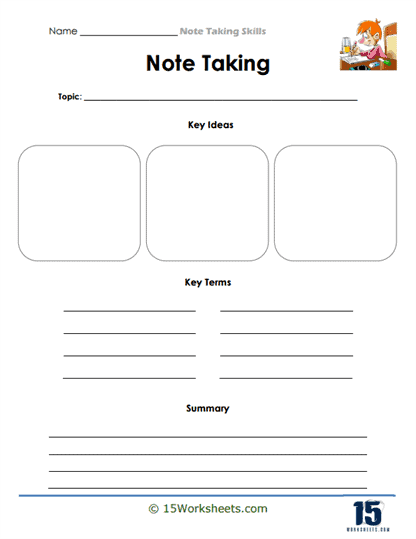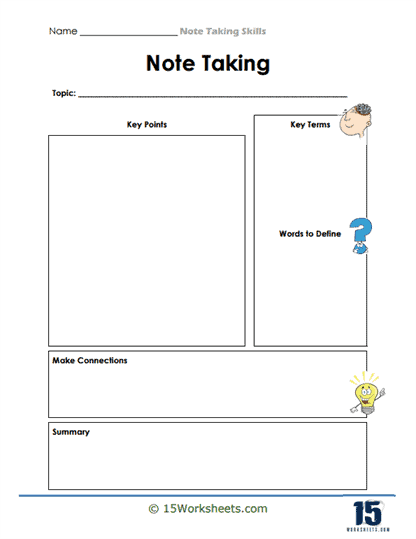Note Taking Worksheets
All About These 15 Worksheets
This series of 15 worksheets on Note Taking is designed to equip students with essential skills and techniques for effective note-taking, both during lectures and while reading. Note-taking is a fundamental academic skill that enhances comprehension, facilitates review, and promotes active learning. By engaging with these worksheets, students can enhance their note-taking abilities and develop strategies that suit their individual learning styles. Through these worksheets, students will:
- Develop active listening, selective noting, paraphrasing, and summarizing, which all provide a good foundation of effective note-taking techniques;
- Learn strategies for taking notes as they read, including highlighting important details, summarizing paragraphs, and creating annotations;
- Be introduced to the Cornell Method and apply this technique to their own note-taking practices;
- Create outlines by identifying main ideas, supporting details, and subtopics, fostering organization and clarity in their notes;
- Create visual representations of information, helping them grasp connections and visualize complex topics;
- Use charts and tables to compare and contrast ideas, summarize information, and identify patterns or relationships within the content they are studying;
- And explore the clustering method, which is a technique that encourages critical thinking and helps them generate new insights.
This series of worksheets on Note Taking offers students a comprehensive toolkit for effective note-taking strategies. They cater to various learning styles and enable them to choose the techniques that work best for them. Developing strong note-taking skills enhances students’ ability to capture and retain information, fosters active engagement with the material, and supports their academic success. By engaging with these worksheets, students can cultivate valuable note-taking skills that will benefit them throughout their educational journey.
Why Are Written Notes Important?
Taking notes while you’re learning is an important part of keeping what you learned in the long term, and there are many different ways to take notes that all have their benefits and drawbacks.
Benefits of Taking Notes for Learning
Taking notes is a great way to improve your learning. When you take notes, you are actively engaged in the material, which can help you better understand and remember the information. Additionally, notes can provide a helpful reference tool when you need to review the material later.
Here are four benefits of taking notes for learning.
1. Taking Notes Helps You Better Understand and Remember the Material
When taking notes, you are not just writing down what the speaker is saying verbatim. You are actually processing the information and distilling it into a form easier for you to understand and remember. This process of active listening and note-taking helps you to better understand and recall the material later on.
Furthermore, taking notes by hand has been shown to be more effective than taking notes on a laptop or other device. This is because the act of physically writing out the information helps to embed it in your memory more effectively than simply typing it out.
So next time you’re trying to pay attention in class or at a meeting, be sure to take some notes – your future self will thank you for it!
2. Notes Provide a Useful Reference Tool
In the fast-paced world of academics, keeping track of all the critical information presented in lectures and texts can be challenging. As a result, many students find it helpful to take written notes.
Not only do notes provide a useful reference tool, but they also force students to pay attention and process the material in an active and engaging way.
In addition, taking notes can help students better remember the information they have learned. When reviewing notes, students can see the material in a new light and make connections they might not have made before. As a result, taking notes is an essential part of the learning process.
3. Taking Notes Can Help You Identify Key Points and Main Ideas
As any student knows, taking notes is an essential part of the learning process. Not only does it help you to focus on the lecture or discussion, but it also allows you to identify key points and main ideas.
When taking notes, it is crucial to be concise and to focus on the most critical information. However, you should also make sure to leave yourself some room to add additional details later.
Once you have taken your notes, reviewing them periodically is also a good idea to ensure that you have understood the material. By taking careful notes, you can ensure that you get the most out of your lectures and discussions.
4. Notes Can Help You Organize Your Thoughts and Prepare for Exams
When taking notes, it is essential to be concise and organized. Many students find it helpful to use a system of colors and symbols to code their notes.
For example, using a different color for each class can help you quickly identify notes from different subjects. Additionally, using symbols such as stars and arrows can help you to highlight important points.
Taking the time to develop a good note-taking system will pay off in the long run by making learning and retaining information easier.

